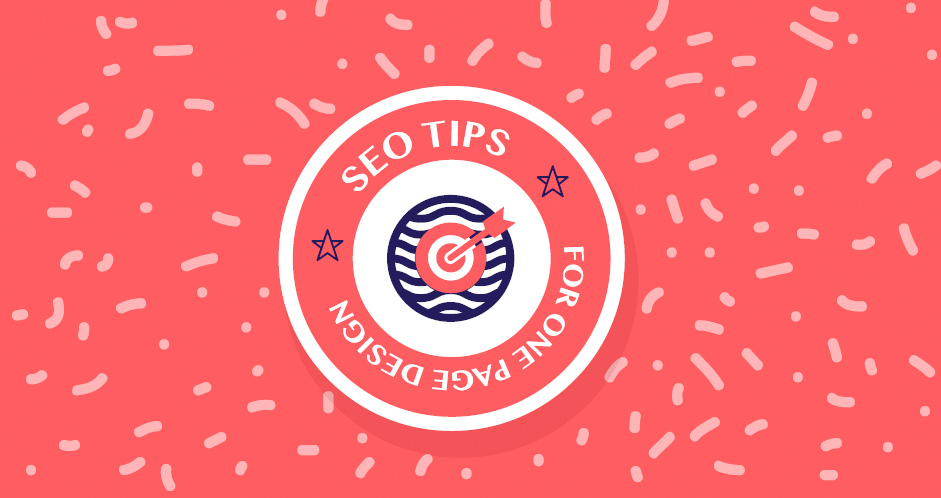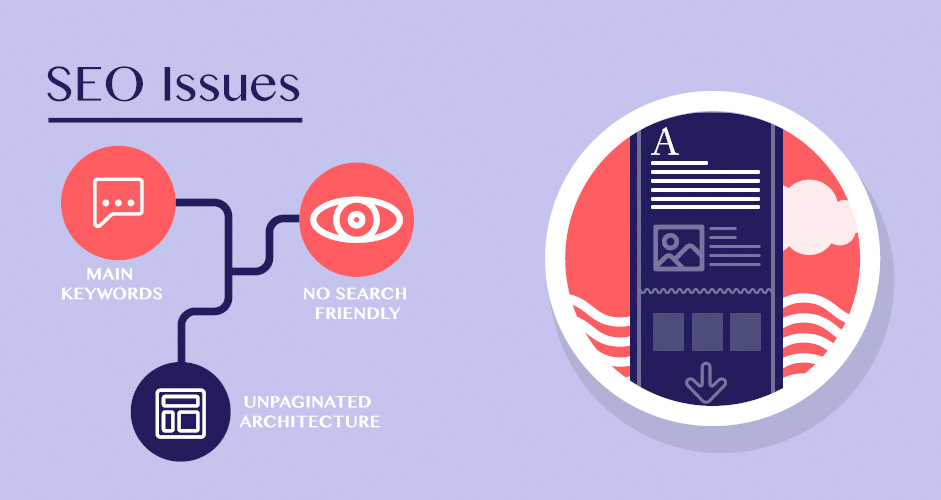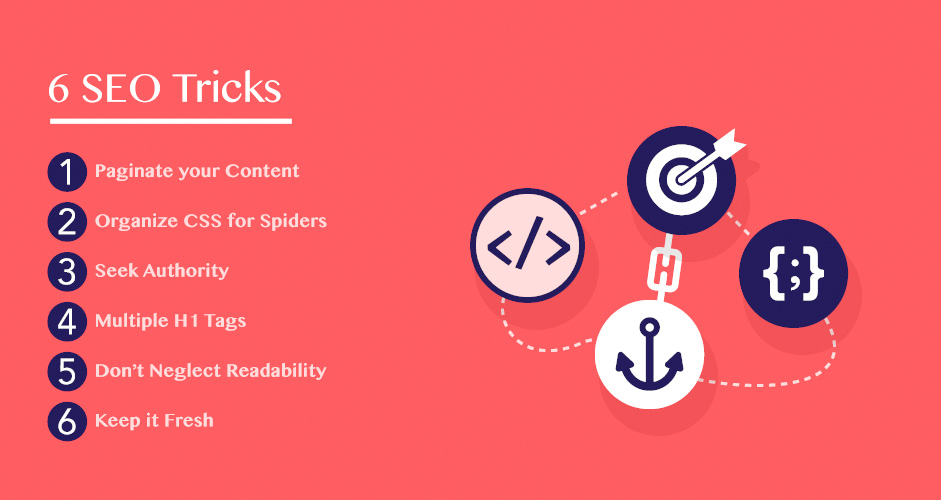Love ‘em or hate ‘em, you can’t beat ‘em, so you might as well join ‘em. I’m of course referring to the sudden, and not altogether unpleasant influx of single page websites. This design trend has taken a lot of heat in times past for not being search friendly. Their non-paginated structures don’t exactly make for easy indexing, and if there’s an abundance of content on the page, it can make things even more difficult for search spiders looking to find relevant content. Combine that with the fact that one page means you can’t target more than one main keyword phrase, and it seems like a lot of the criticism leveled at one pagers is completely justified. Not so, says I.

There are plenty of search friendly one page sites, and some very effective techniques to circumvent all of the difficulties mentioned above. Single page sites aren’t traditional, and can be challenging to optimize if you’re not used to them. On the other hand they are focused on a single purpose, and can be designed to deliver on that purpose exclusively, making it easier to optimize according to that idea.
Today, we’ll go over some of the clever methods and mythos to optimizing one page websites for search engines. Suggested reading.

Paginate Your Page
Unpaginated architecture is the main complaint leveled against one page proponents. And why not? It’s certainly the structure to which we’re all accustomed. It helps you spread out your domain authority, and target multiple keywords. Honestly, for most websites it’s the way to go. Single page sites are best reserved for landing pages, specified business offerings, or storytelling.
One thing that frustrates me about much of the SEO advice concerning one page websites that you come across, is the thought that you should add a blog or other content pages to your one-page site. I keep seeing this idea pop up, and am constantly rolling my eyes. Adding pages to a single page site, makes it a multi-page site. I didn’t think that really needed to be stated out loud but I come across that pseudo-solution all the time, so I figured I’d get it out of my system right away.
Instead of paginating your site, you can just separate the content contained on your one page in an organized and compelling format. In essence, you’ll be paginating your only page. If it’s a landing page, you can separate content into headings: features, headings, reviews, contact form, etc. If you’re setting up a one page site for your business, then you can literally compile a traditional site format on a single page by separating the content into all the industry standards: home, about, contact, products, blog, and so on.
Clearly defined sections that are easy to navigate will make your one page site more legible to visitors and search spiders alike.
Organize Your CSS for Spiders
Of course, whatever you want to partition off that’s facing users will have to be adjusted in the CSS, and that’s easily accomplished by placing each section of content within DIVs. While this doesn’t have a direct effect on SEO, it does make your CSS easier to scan. You can also use CSS id names as anchor links, and these do directly affect your SEO. They serve as little keyword beacons of light which search engines lock onto like moths to a flame.
This is best accomplished with a navigation bar, either on the side or top of your page. This, again, makes your one page site more usable and easier to index. Each anchor link should have a targeted keyword, one that sounds natural and makes sense in the overall context of your site, mind you. If it doesn’t fit in with your content structure then it only serves to frustrate users and inflate your bounce rate.
To make an anchor link, begin by naming the DIV:
<div id="hypothetical content section">
Then add the link:
<a href="#hypothetical content section"> Hypothetical + content + section</a>
Speaking of links, building outside links back to your site is another great way of increasing your rank. Which brings us to our next point.
Seek Authority
Despite declining importance, link building still holds some sway as an SEO strategy, especially if you have content that goes viral. You shouldn’t focus on building spammy links in random comment sections though. Instead, you should look to include social media buttons so that website and its content is easily sharable. Simultaneously, you should seek authoritative link backs through guest blogs, collaborative efforts with influential voices inside your industry, and positive reviews of your offerings.

Multiple H1 Tags
Normally, it would be bad form to include multiple H1 tags on your page. After all, what do you need more than one title for? On a single page site, however, more than one H1 tag can indicate a separation in content, again making your page more legible and search friendly. It also presents an opportunity to keyword optimize.
Don’t Neglect Readability
This is obvious and primary, and I’ve touched on it quite a bit in earlier sections. Yet it bears repeating. Never sacrifice flow or coherence for the sake of SEO. Nothing ruins your ranking quicker than a site that no one can read. As always, the best way to score high with your search engine optimization efforts it by delivering quality content that’s relevant to your audience. If you can do that, then the organic traffic will follow as a natural consequence.
Keep it Fresh
One last thing, and this one can be tricky. For Google to rank your site highly, it’s pretty important to continually refresh your content. On a single page site that has infinite scrolling enabled, that might not be so difficult. If infinity doesn’t quite fit your bill, however, you might be up a creek. Refreshed content is a necessity, so you’ll have to be creative as to what you’ll change on your site, and how often. One way to address this problem might be to constantly switch out older product reviews from users to newer ones.
In the worst case scenario, you’ll just have to add another page for a blog, or user generated content.
Being more precise, the algorithmic penalty by Google is applied for very low speeds and load times of several seconds. From high speeds and load times of less than one second, there is no penalty or direct bonus as such, but there may be an indirect improvement in the medium term positioning obtained from an improvement in the user experience on the page. This improvement in the experience could convert into a better user response (longer time spent on the page, greater return or intention to search for the brand, etc) that would imply an improvement in SEO positioning.()
So there you have it. 6 different tips to help your search ranking on a one page website. Do you have any other tricks that can help improve a one pager’s SEO? Share them in the comment section.
